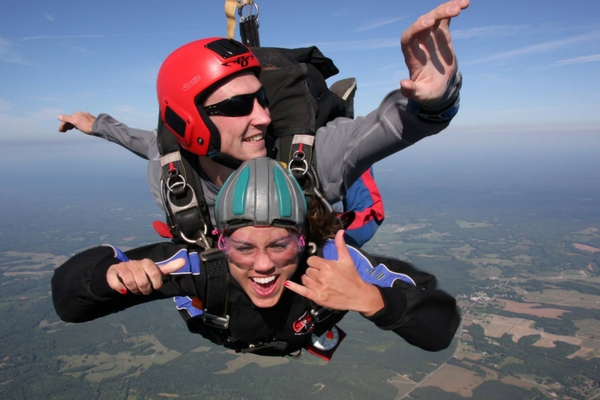
The force of gravity causes objects to fall toward the center of Earth.
#Proper freefall position free#
(It might be difficult to observe the difference if the height is not large.) Air resistance opposes the motion of an object through the air, and friction between objects-such as between clothes and a laundry chute or between a stone and a pool into which it is dropped-also opposes motion between them.įor the ideal situations of these first few chapters, an object falling without air resistance or friction is defined to be in free fall. A tennis ball reaches the ground after a baseball dropped at the same time. In the real world, air resistance can cause a lighter object to fall slower than a heavier object of the same size. Scott demonstrated in 1971 on the Moon, where the acceleration from gravity is only 1.67 m/s 2 and there is no atmosphere. This is a general characteristic of gravity not unique to Earth, as astronaut David R. In the absence of air resistance, heavy objects arrive at the ground at the same time as lighter objects when dropped from the same height Figure 3.26.įigure 3.26 A hammer and a feather fall with the same constant acceleration if air resistance is negligible.

Until Galileo Galilei (1564–1642) proved otherwise, people believed that a heavier object has a greater acceleration in a free fall. This experimentally determined fact is unexpected because we are so accustomed to the effects of air resistance and friction that we expect light objects to fall slower than heavy ones. The most remarkable and unexpected fact about falling objects is that if air resistance and friction are negligible, then in a given location all objects fall toward the center of Earth with the same constant acceleration, independent of their mass. If a ball is thrown upward, the equations of free fall apply equally to its ascent as well as its descent. But “falling,” in the context of free fall, does not necessarily imply the body is moving from a greater height to a lesser height. For example, we can estimate the depth of a vertical mine shaft by dropping a rock into it and listening for the rock to hit the bottom. Let’s assume the body is falling in a straight line perpendicular to the surface, so its motion is one-dimensional. Solve for the position, velocity, and acceleration as functions of time when an object is in a free fall.Īn interesting application of Equation 3.4 through Equation 3.14 is called free fall, which describes the motion of an object falling in a gravitational field, such as near the surface of Earth or other celestial objects of planetary size.Describe how the values of the position, velocity, and acceleration change during a free fall.Use the kinematic equations with the variables y and g to analyze free-fall motion.The pattern of drops resembles the dot diagram shown in the graphic at the right.By the end of this section, you will be able to: Instead of seeing a stream of water free-falling from the medicine dropper, several consecutive drops with increasing separation distance are seen. The dropper drips water and the strobe illuminates the falling droplets at a regular rate - say once every 0.2 seconds.
#Proper freefall position full#
The room is darkened and a jug full of water is connected by a tube to a medicine dropper. Recall from an earlier lesson, that if an object travels downward and speeds up, then its acceleration is downward.įree-fall acceleration is often witnessed in a physics classroom by means of an ever-popular strobe light demonstration. The fact that the distance that the object travels every interval of time is increasing is a sure sign that the ball is speeding up as it falls downward.

The position of the object at regular time intervals - say, every 0.1 second - is shown.

The dot diagram at the right depicts the acceleration of a free-falling object.

There are two important motion characteristics that are true of free-falling objects: Any object that is being acted upon only by the force of gravity is said to be in a state of free fall. A free falling object is an object that is falling under the sole influence of gravity.


 0 kommentar(er)
0 kommentar(er)
